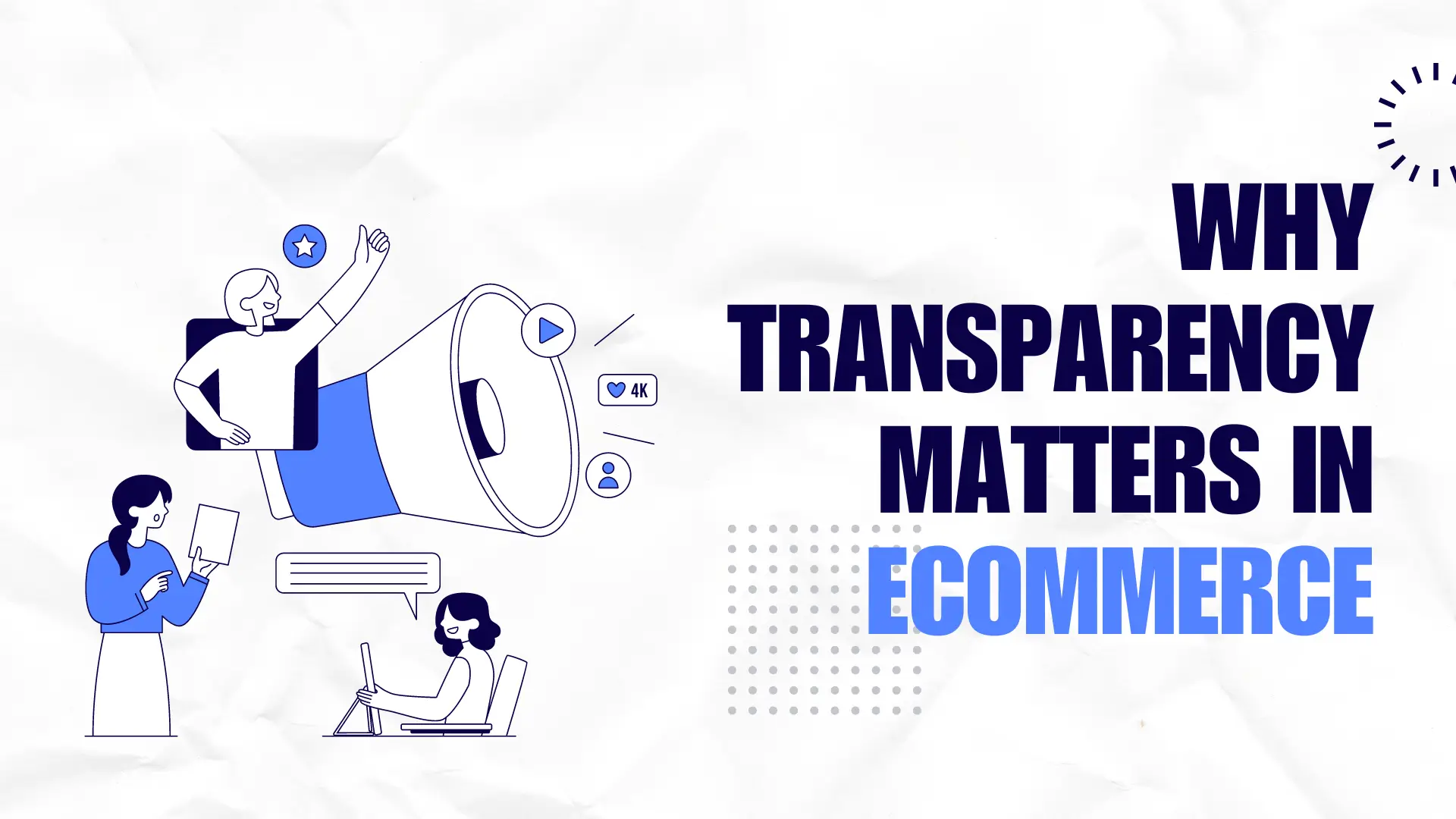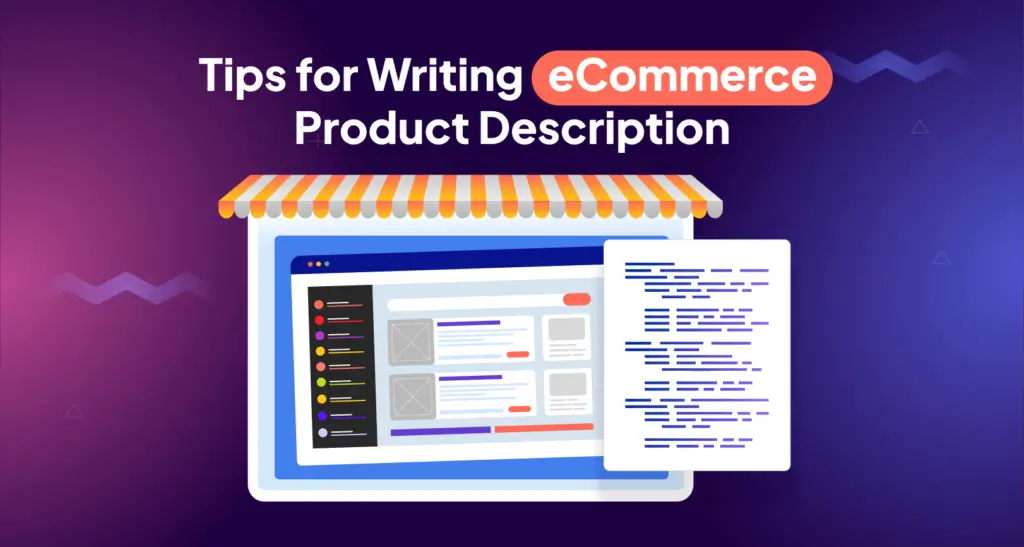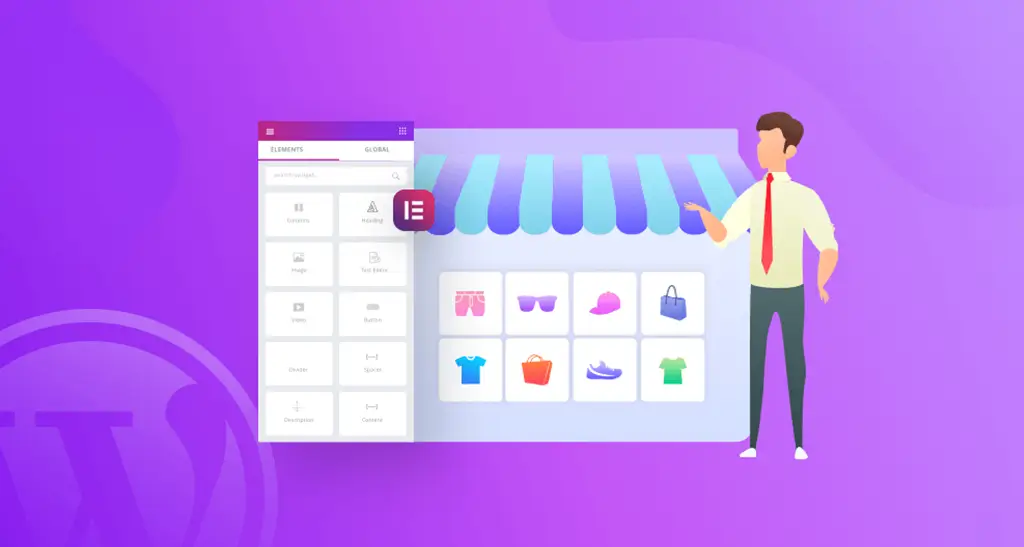
How to Improve eCommerce Customer Experience with Transparency
According to recent statistics, there are over 30 million active eCommerce sites online today, and this number is increasing every year. This indicates there is no shortage of sellers in the market. So, no matter what product you look for, you’ll instantly find numerous alternative sellers online.
So, what sets your eCommerce store apart?
It’s all about the experience. Beyond the products you offer, factors like user-friendliness, transparency, and customer service play a crucial role in your success. All these together contribute to the user experience, which is not optional but a must for the success of any online business today.
In this article, we’ll explain how to improve eCommerce customer experience with transparency and build sustainable relationships with customers. Keep reading it to the end!
Why Transparency Matters in eCommerce

Transparency has always been crucial for building trust in the commercial world between businesses and customers. As countless alternative online shops and products are available, customers love to opt for brands that are open and honest about their words, policies, and practices.
By clearly describing the product, pricing, shipping, and refund policies, online shops help customers make informed decisions. This level of openness and honesty creates a sense of security in customers’ minds, making them feel valued and appreciated.
If customers become frustrated or suspicious for even the slightest reason, they may instantly move elsewhere, thereby losing you the opportunity. So, how to improve the eCommerce customer experience with transparency? We’ll explain it in the following section.
Explore the best online store builders for WordPress.
How to Improve eCommerce Customer Experience with Transparency
Customer experience in the eCommerce industry depends on not just one but numerous factors. If you want to succeed, you must take this issue seriously. Let’s discuss the points below.
1. Write Product Information in Detail

In eCommerce, customers cannot experience the product in hand. They solely depend on the product information to make informed decisions. This is why covering product details is so important for guiding them to purchase. Below are the things you must include in product details.
- Key features and benefits of the product
- Multiple high-quality images
- Demonstrative video clip
- Product size, weight, material, and any technical details
- Variations of the product
- Stock availability
The more informed your customers are, the more likely they are to make a purchase, leading to improved conversion rates. Learn how to write eCommerce product descriptions.
2. Regularly Update the Product Information
Like any regular shop, products on eCommerce sites often run out of stock, prices fluctuate, and variations are changed. Unless you update them, customers might place orders for items that are currently unavailable. So, after some days, it may appear that you are canceling the order.
This can create a serious negative impression in customer psychology, hurting your brand reputation. Therefore, regularly update your stock availability, new features released, and changes in pricing. It will ensure that customers have access to accurate information when making their decisions.
3. Ensure Easy Navigation

Customers should be able to find what they are looking for quickly and effortlessly. With a poor navigation system, you can never ensure this. So, how to make navigation easy on your eCommerce site? You can do this by implementing the points listed below.
- Add a logically organized menu to the header
- A powerful search bar in the header
- Include breadcrumbs so users can see their location
- Clickable categories and subcategories in the header/footer
- Filtering and sorting options on the shop page
- Feature special sections like bestsellers and new arrivals
Explore how to build online shop pages.
4. Offer Unique Selling Propositions (USP)
A unique selling proposition (USP) is a special feature or value that sets particular products apart from market competitors. It explains why customers should buy it instead of others. Each eCommerce site usually has hundreds of products, but not all are equally special.
Only a few might be unique from other online shops. You must promote them with special attention to create unique selling propositions on your site. But how to do this? See the points below.
- Include the special products in the hero section
- Add badges like ‘Best Seller,’ ‘Eco-Friendly,’ ‘Guaranteed,’ etc.
- Highlight USP in the product title
- Showcase social proofs
Check out the guide on how to increase your eCommerce conversion rate (15+ tips).
5. Be Clear About the Pricing

After analyzing numerous product reviews on Alibaba and AliExpress, we found a common trend. Most negative reviewers reported about hidden and unexpected charges that sellers revealed to them only at the time of delivery. For the sake of your brand value, you should never do this.
Mention clearly all the pricing and additional costs that customers should carry. However, sometimes, shipping and courier companies may impose additional charges on their own due to certain complications. But in the end, customers will blame you.
So, what should you do in this case? Please read the shipping and courier policies you deal with. In a special note on the checkout page, mention that under certain conditions, they may add additional costs to the shipping charges. Here’s how to set multiple prices per product in WooCommerce.
6. Collect and Display Product Reviews and Ratings
Reviews and ratings play a powerful role in influencing customers’ buying decisions. Because over 50% of customers today love to read reviews and ratings before buying any product. Hope you are also no exception. Positive reviews serve as social proof.
This enhances the credibility of the products and encourages new customers to make a purchase. But if your eCommerce site is brand new, it will naturally have no product review or rating. You need to play some tricky games at this stage. For example:
- Offer discounts, coupons, or loyalty points in exchange for customer reviews
- Personally reach out to some customers through email, SMS, or social channels
- Run a pre-launch program to grow interest and engagement
- Arrange a review competition in exchange for some incentives
Master your skill set: how to write killer review request emails.

weMail is a promising email marketing tool that you can use to send product review emails. The plugin covers 110+ readymade templates, including many for product review requests. Besides, weMail provides a drag-and-drop builder for creating templates. You can customize the existing templates to write better review request emails.
7. Grow Engagement Through Lead Generation
Leads are the group of people who have shown interest in your products or services by providing contact information like email addresses or phone numbers. By gathering customers’ contact information and preferences, you can run targeted campaigns for better conversions.
Another great advantage of lead generation is that you can encourage the same customer to buy your products repeatedly, strengthening brand loyalty. In the following ways, you can capture leads:
- Use opt-in forms
- Offer discounts or coupons
- Add exit-intent pop-ups
- Create a newsletter section
- Arrange polls, quizzes, or gaming programs
Explore the best WordPress lead generation plugins.
8. Showcase Shipping, Return, and Refund Policies

Customers want to know how their products will be delivered and within how many days they will receive them. By providing straightforward information regarding these topics, you can help customers feel secure in making buying decisions. Transparency in these fields is mandatory for higher customer satisfaction and loyalty.
- Mention the minimum and maximum delivery time
- Within how many days customers may return the product
- Under which conditions customers will be refunded
9. Track Orders
All the most popular eCommerce sites like AliExpress, eBay, Amazon, and Walmart provide real-time order tracking to keep customers updated on their order delivery status. As a result, customers are less likely to contact the support team for delivery updates, saving time for both.
Today, most international shipping and courier companies provide you with an order tracking code whenever you submit a product. You just have to pass it to the respective customers, whether through email, SMS, or live chat. The rest they can do themselves.
10. Guest Checkout Option
The Guest Checkout option allows customers to make purchases without creating an account. This feature has become very popular in recent years. It simplifies the buying process by reducing the number of steps required for the first time and one-time customers.
This feature is significantly helpful for customers who prioritize speed and don’t want to share personal information. All the most popular eCommerce sites like Alibaba, AliExpress, Amazon, and Walmart have this option on their sites.
11. Post-Purchase Follow-up
Post-purchase follow-up refers to the communication and engagement efforts that business organizations continue after someone buys a product or service. You can do this by sending emails, surveys, or messages to collect feedback and thank them at the end.
This post-purchase follow-up helps you reinforce relationships between the customer and your business, ensuring that customers feel valued even after the sale. This part is crucial for any business to solidify customer loyalty and make them buy your products repeatedly.
Finally, post-purchase follow-up can represent your integrity, which will contribute to increasing your chances of selling your product through word-of-mouth marketing.
12. Create a Knowledge Base

A knowledge base is a collection of structured online resources that cover information, support, and documentation for users related to specific products and services. The knowledge base guide and documentation posts answer common questions and troubleshoot issues by which customers and users can solve various problems themselves.
weDocs is a powerful knowledge base builder plugin. It not only helps create knowledge-based articles but also organizes and displays them in intuitive ways. The plugin comes with an AI chatbot that instantly answers questions based on the knowledge base articles you have already created.
13. Provide Live Chat Support
Live chat facilitates real-time communication. It lets customers immediately inform you about any problem or confusion and get quick responses. Sometimes, customers want more information than what you have provided on the product, privacy, and checkout pages.
Unless they get this information immediately, they move away to another online shop. And here comes the need for the live chat option. Here’s a list of discussing some of the best WordPress live chat plugins. You can install any of them to enable the feature on your site.
In addition to the live chat option, don’t forget to mention your phone number, email addresses, and links to your social profiles.
13. Easy Payment Options

Select suitable payment gateways based on your target customers, including the currency and payment systems they use. Also, keep the checkout page as simple as possible. It’s better to maintain a single-page checkout page.
We often come across some checkout pages that are split into multiple pages to collect extensive customer information. Our observation shows that the conversion rate is significantly lower on these pages. Explore the best PayPal alternatives for eCommerce websites.
14. Build Online Communities
An online community provides a space for customers to share their buying experiences and product recommendations that might be helpful for your business. You can use this user-generated content, like reviews and testimonials on your web pages, to further enhance the credibility of your products.
A strong online community not only improves custom retention but also opens a space for word-of-mouth marketing. You can create such an online community by creating Facebook pages & groups, Twitter communities, Quora accounts, LinkedIn groups, etc.
12. Enable Cross-Selling and Upselling

Although cross-selling and upselling are two promotional strategies, you can suitably use them to improve user experience and purchasing possibilities simultaneously. An example of cross-selling is if someone buys a camera, you might suggest a camera bag and extra lenses.
On the other hand, as part of upselling, you can suggest customers purchase a more expensive version of the product he has selected or are going to buy. Both strategies can enhance the customer’s experience by providing them with options that can better meet their needs and desires.
Closing Up!
In conclusion, improving customer experience through transparency is indispensable for building trust and long-lasting customer relationships. Implementing all the above-mentioned steps can help you accomplish this task, reinforcing the culture of transparency in your business.
However, numerous tasks may take a long time if done manually. You can automate them by leveraging technological support. For example, weDocs can be used for knowledge-based live chat support and weMail for email automation.
We hope you enjoyed this post. If you feel we have missed any point, please mention it in the comment box below. In the next update, we’ll add it to our post to make this write-up more resourceful.
Subscribe To Our Newsletter
Don’t miss any updates of our new templates and extensions
and all the astonishing offers we bring for you.



